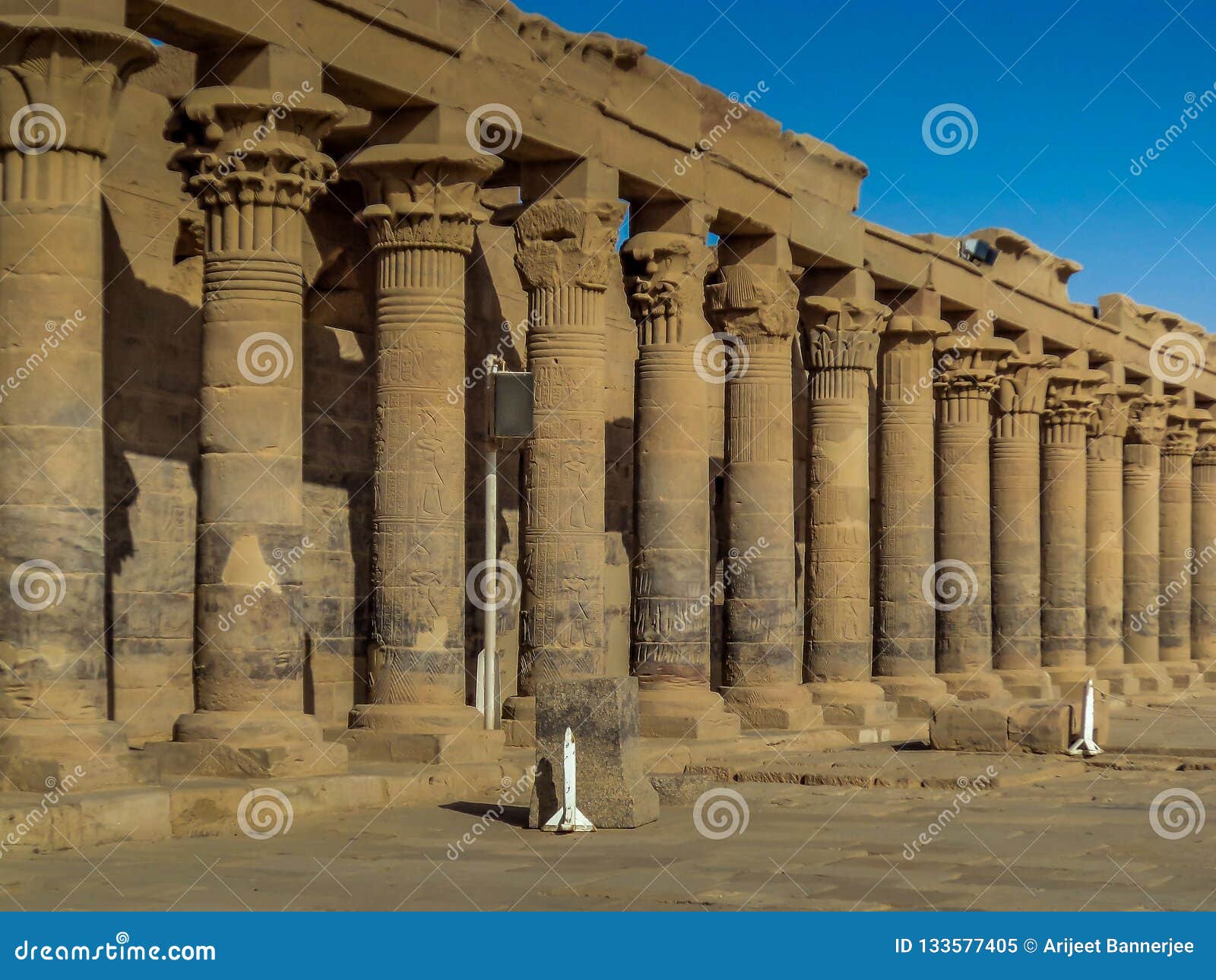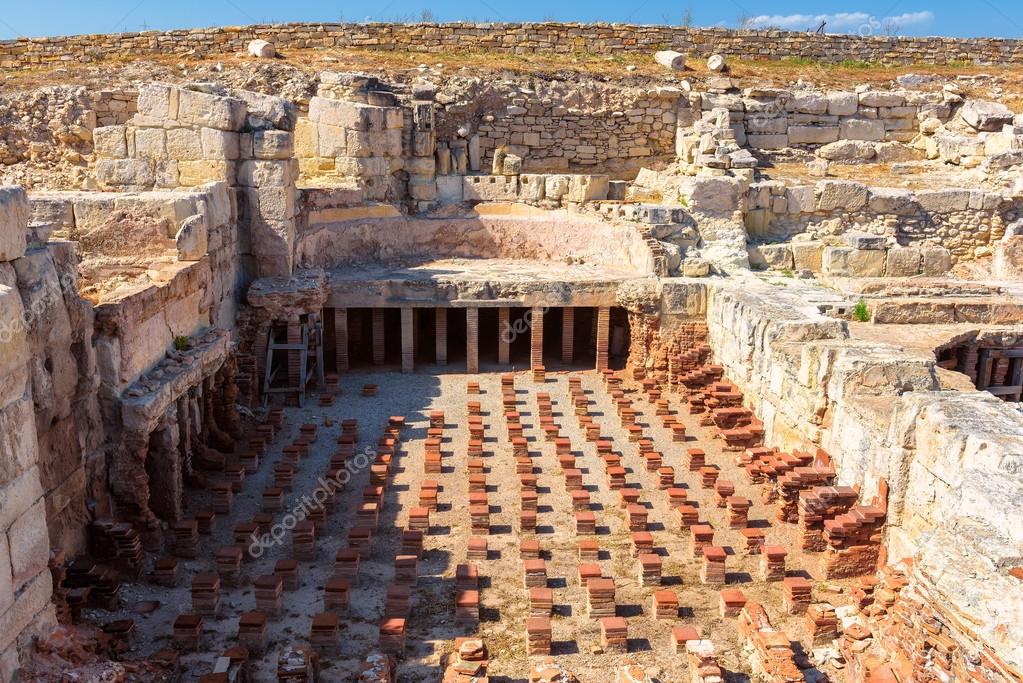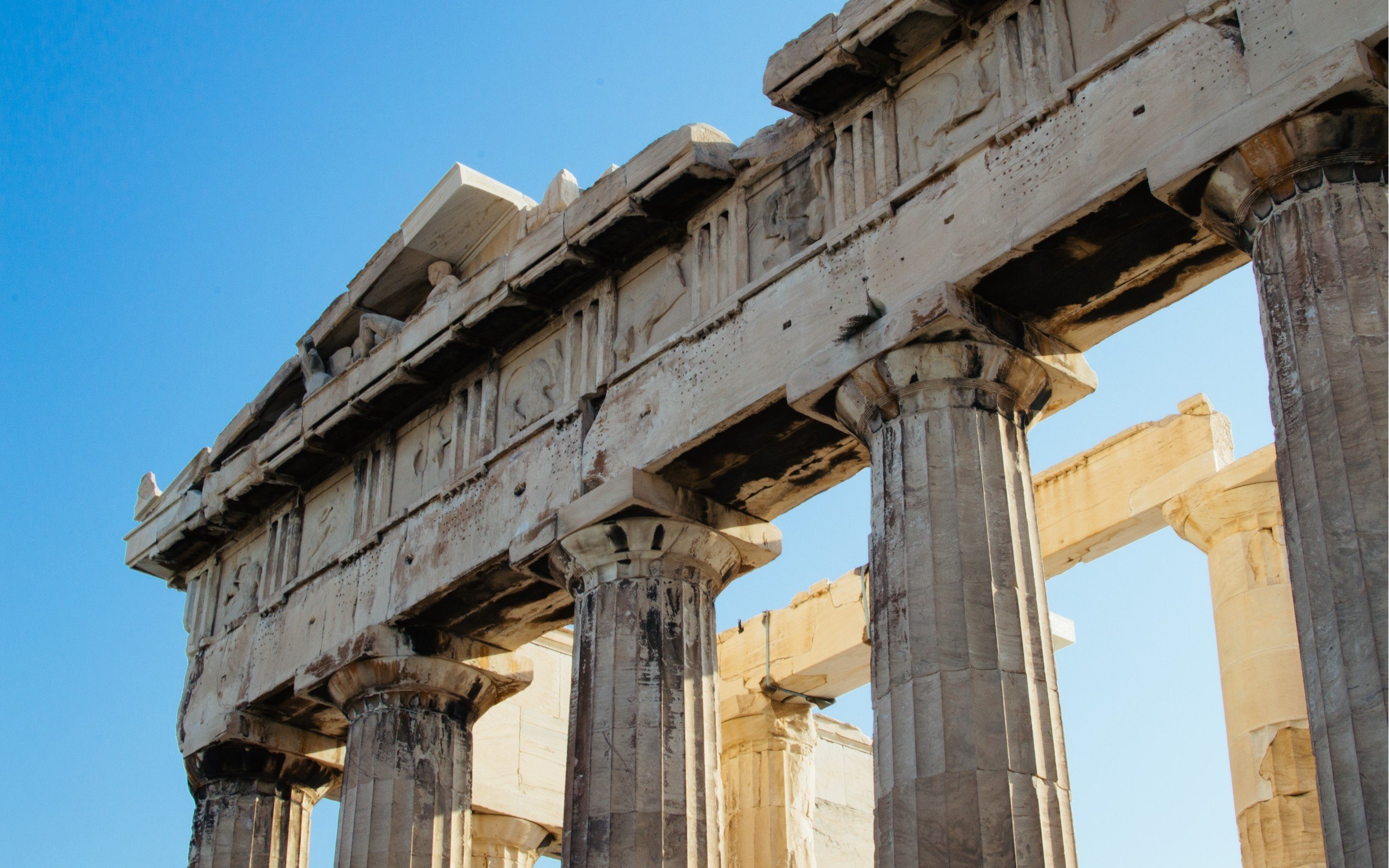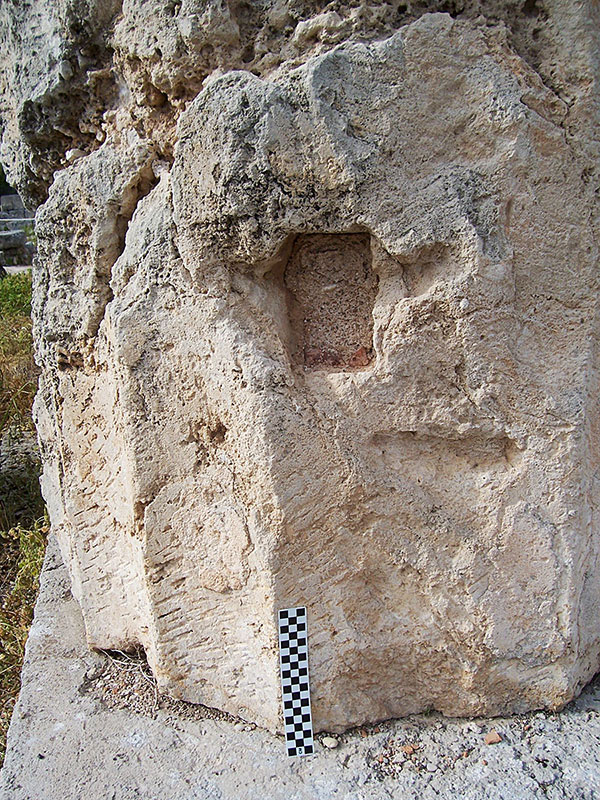
Colonnade in Ruins of the Ancient Greek City Stock Image Image of architecture, sculpture
Left: The Colonnade Entrance Of Djoser Complex in Saqqara, Egypt Right: Temple Of Apollo In Ancient Corinth, Greece. The funerary complex of Djoser (Zoser) is believed to have been built around the beginning of the 3rd Dynasty. It is a walled compound that is constructed from stone rather than the mud brick that was used before this time.

A Colonnade of Ancient Egyptian Columns at Philae Temple Stock Image Image of civilization
In classical architecture, a colonnade is a long sequence of columns joined by their entablature, often free-standing, or part of a building. [1] Paired or multiple pairs of columns are normally employed in a colonnade which can be straight or curved. The space enclosed may be covered or open.

Antique Marble Colonnade Architecture Concept from Ancient Greek Times in South European
Possible answer: S T O A Did you find this helpful? Share Tweet Look for more clues & answers Sponsored Links Ancient Greek roofed colonnade - crossword puzzle clues and possible answers. Dan Word - let me solve it for you!

504 Portico Ancient Temple Colonnade Stock Photos Free & RoyaltyFree Stock Photos from Dreamstime
The crossword clue Ancient Greek roofed colonnade with 4 letters was last seen on the June 08, 2023. We found 20 possible solutions for this clue. We think the likely answer to this clue is STOA. You can easily improve your search by specifying the number of letters in the answer. Best answers for Ancient Greek Roofed Colonnade:

Ruins of ancient Greek colonnade in Paphos, Cyprus — Stock Photo © luckyphotographer 111939532
Development Temple of Isthmia, Greece. Constructed between 690 and 650 BCE Origins The earliest Greek sanctuaries probably did not contain temple buildings, though our knowledge of these is limited since many of these were destroyed, and the subject is controversial.

Colonnade of an ancient temple, Parthenon, Acropolis, Athens, Greece Stock Photo Alamy
The earliest colonnades appear in the temple architecture of antiquity, numerous examples of which survive in Greece and Rome. Gerasa, Jordan: forum and colonnade Ruins of the colonnade of the forum at the ancient city of Gerasa, modern Jarash, Jordan.

Free Images structure, old, monument, column, landmark, ruins, greece, culture, historical
Construction of the spectacular south front - with its great colonnade and 44 Ionic columns - was not completed until the late 1840s. A renewed European interest in ancient Greek architecture had emerged in the 1750s. For the first time, ancient Greek buildings were studied and recorded in detail.

Colonnade Classical, Pillars & Columns Britannica
A pronaos ( UK: / proʊˈneɪ.ɒs / or US: / proʊˈneɪ.əs /) is the inner area of the portico of a Greek or Roman temple, situated between the portico's colonnade or walls and the entrance to the cella, or shrine. Roman temples commonly had an open pronaos, usually with only columns and no walls, and the pronaos could be as long as the cella.

Interior view of the lower colonnade of the Stoa of Attalos. Athens, Greece Architecture
In Ancient Greek architecture, the tholos form was used for a variety of buildings with different purposes. A few were round temples of Greek peripteral design completely encircled by a colonnade, but most served other functions, and some were architecturally innovative.

pantheons, Greece, Athens, Acropolis, Architecture, Ancient, Colonnade, Columns Wallpapers HD
tholos, in ancient Greek architecture, a circular building with a conical or vaulted roof and with or without a peristyle, or surrounding colonnade.In the Mycenaean period, tholoi were large ceremonial tombs, sometimes built into the sides of hills; they were beehive-shaped and covered by a corbeled arch.In classical Greece, the tholos at Delphi had a peristyle; the tholos in Athens, serving.

Typical Ancient Greek Colonnade, Sunset Time Stock Image Image of archaeological, athens
The Greek Stoa or Colonnade. The Stoa was a common building type found throughout ancient Athens. It consisted of two rows of columns supporting a roof with a wall on one side (click here for a plan of a stoa from the Perseus Project). Stoas were both ornamental and practical. They served as promenades sheltered from the heat of summer and the.

Pilars Ancient greek architecture, Greece, Athens greece
Parthenon, temple that dominates the hill of the Acropolis at Athens. It was built in the mid-5th century bce and dedicated to the Greek goddess Athena Parthenos ("Athena the Virgin"). The temple is generally considered to be the culmination of the development of the Doric order, the simplest of the three Classical Greek architectural orders.

Colonnade of Ruins Ancient Greek Temple of Juno, Old Architecture Agrigento, Sicily Stock Photo
Greek Colonnades The most familiar example of Greek colonnades exists in the ruins of the Parthenon, begun during the time of Pericles in 447 BCE, which contains Doric columns, the simplest.

Image Gallery The Archaic Colonnade at Ancient Corinth A Case of Early Roman Spolia April
This colonnade provided a covered ambulatory (roofed walkway), and it was also a device to distinguish the building from purely secular architecture. This plan can be seen in buildings on Samos and at Thermum in central Greece. The construction remained simple: well-laid rubble and mud brick, with timbering and a thatched or flat clay roof.

Classical Column Ancient greek architecture, Greek columns, Antique stone
The Oxford Pocket Dictionary of Current English stoa (stō´ə), in ancient Greek architecture [1], an extended, roofed colonnade on a street or square. Early examples consisted of a simple open-fronted shed or porch with a roof sloping from the back wall to the row of columns along the front.

Greek colonnade, San Francisco, CA, USA The Greek colonnad… Flickr
We know a bit more about this later temple because much of it is still standing or was recoverable by excavation: The temple was very large, about 9,240 sq. ft., in fact! It made use of the three main architectural orders found in ancient Greece: Doric peristyle (6 x 12) around the outside of the temple. 32 limestone columns total.